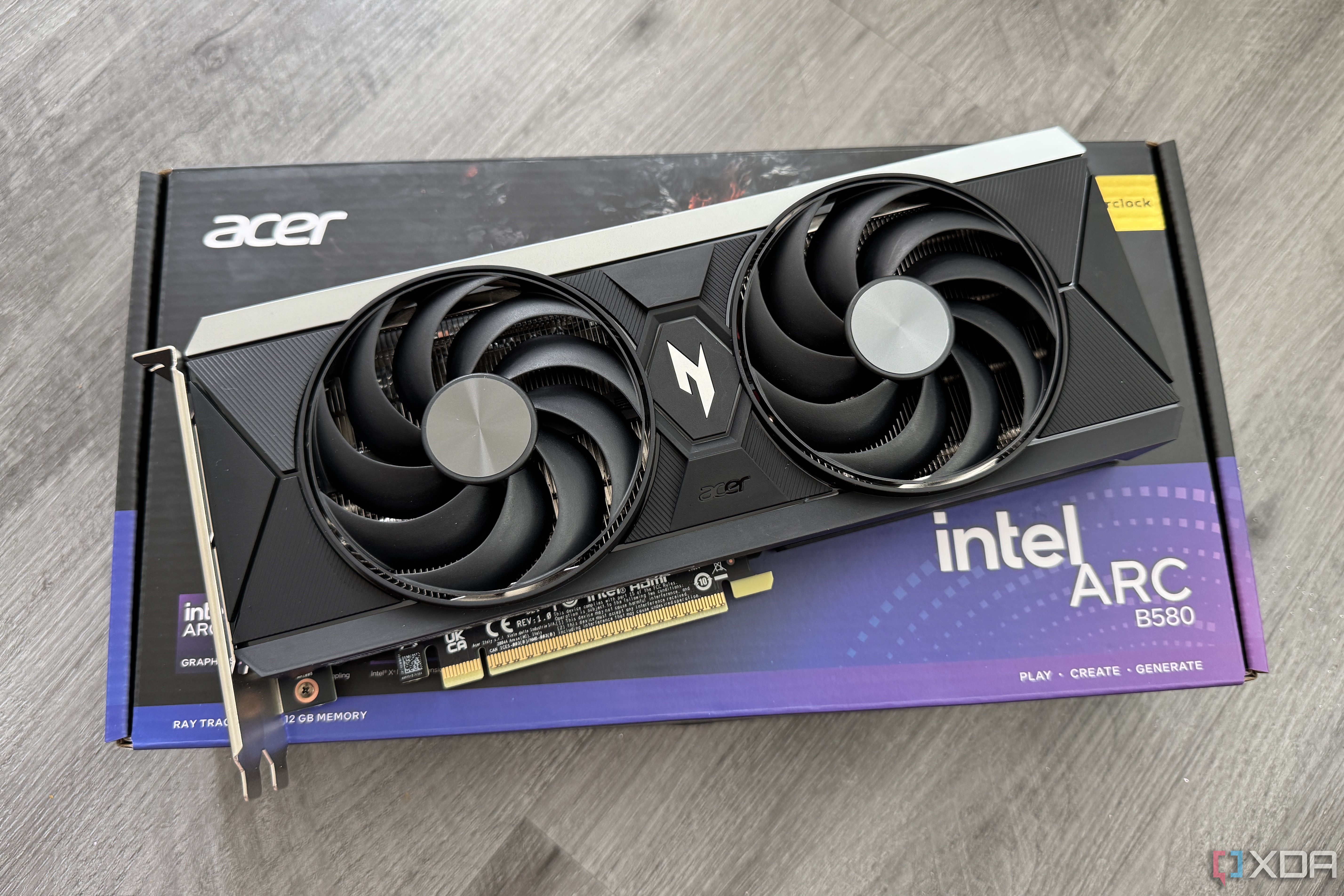Summary
- Intel is not launching the Arc B770 at Computex; instead, it unveiled the Arc B50 and B60 GPUs for AI workstations.
- The Arc B50 focuses on traditional workstations, while the B60 targets AI inference workloads with multi-GPU capabilities.
- Project Battlematrix platform supports up to 8 B60 GPUs, and an optimized Linux software stack for LLMs with over 70 billion parameters.
Despite what appeared to be confirmation that Intel would launch the Arc B770 at Computex, the card was nowhere to be found at the show. Teasing its Computex announcements, the official Intel X account responded to several commenters a couple of weeks back, telling them to "stay tuned" in regard to the Arc B770. It looks like they'll need to stay tuned a little longer. Intel confirmed to me that it won't be launching a new consumer graphics card at Computex this year, but it still has some exciting GPU news.
Intel instead pulled back the curtain on two new GPUs in the Arc Pro range — the Arc B50 and B60. Both are workstation cards with a focus on AI, and they leverage the same Battlemage architecture we've seen in action on everything from Lunar Lake laptops to the Arc B580. In fact, the B50 and B60 use the same BMG-G21 die as the Arc B580, though with a massive bump to VRAM capacity to satisfy demanding AI workloads.
Intel wants to make "inference workstations" with its new Arc Pro GPUs
Scaling up tiny GPUs
Intel has two cards joining the Arc Pro range, and you can see the specs Intel laid out for the B50 and B60 below. However, the critical spec here is memory capacity. AI inference is extremely demanding on VRAM, and most consumer-level graphics cards simply don't have enough VRAM to do much useful for local models. It's like the problem with 8GB graphics cards in modern games, but magnified exponentially.
The two Arc Pro cards have more VRAM, but Intel is pushing the idea further. You're able to scale up the number of Arc Pro B60 GPUs you include in a workstation. Intel says it designed the software stack in such a way that it's essentially able to split models across multiple GPUs, and it says you can expect linear performance scaling up to eight graphics cards. Technically, you could use more, but Intel says it only officially supports eight.
Intel is taking this idea to the extreme with Project Battlematrix. This is a workstation platform built specifically for AI developers. It's based on an Intel Xeon platform with support for up to eight B60 GPUs. Intel is also working on a Linux-based software stack for these workstations, which it says is optimized for LLMs in excess of 70 billion parameters. This is still a work in progress, however. Intel has a road map through the end of the year with milestones for optimization.
Intel is working with OEMs to bring Project Battlematrix machines to market, and that's the primary way you'll be able to find the Arc Pro B60. Intel's board partners have a lot of leeway in their designs for the B60 — for instance, Maxon has a dual-GPU model it's releasing — so there isn't a list price for the card.
The lower-end Arc B50 doesn't have multi-GPU capabilities, but it targets more traditional workstations. It's a compact, dual-slot card that still uses Intel's Arc Pro drivers, and it can still handle lightweight AI workloads. It's more akin to something like the RTX A1000, however, accelerating other workstation tasks outside of AI. Unlike the B60, Intel is selling the B50 directly to customers, and it clocks in at an MSRP of $300.
Intel is already sampling the B50 and B60 to partners, and it plans to have broad availability in Q3. Development will continue past release, however, with Q4 being the target for full feature enablement.
.png)











 English (US) ·
English (US) ·